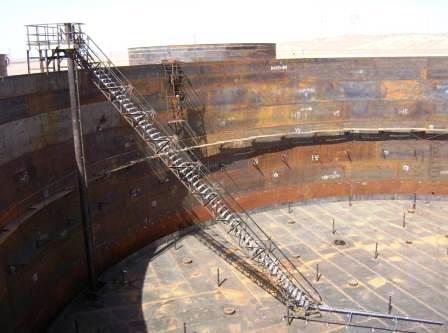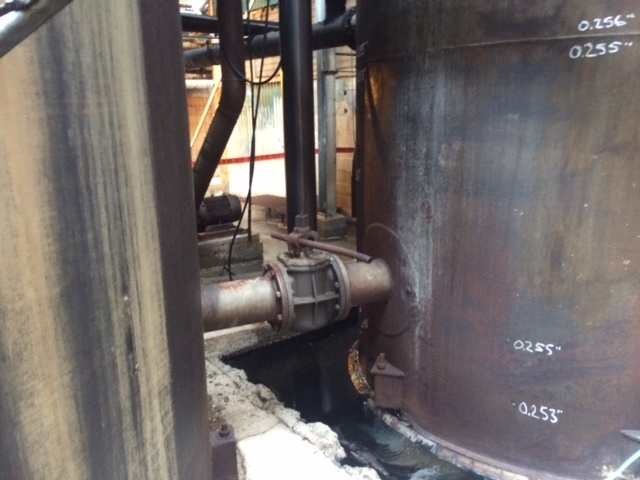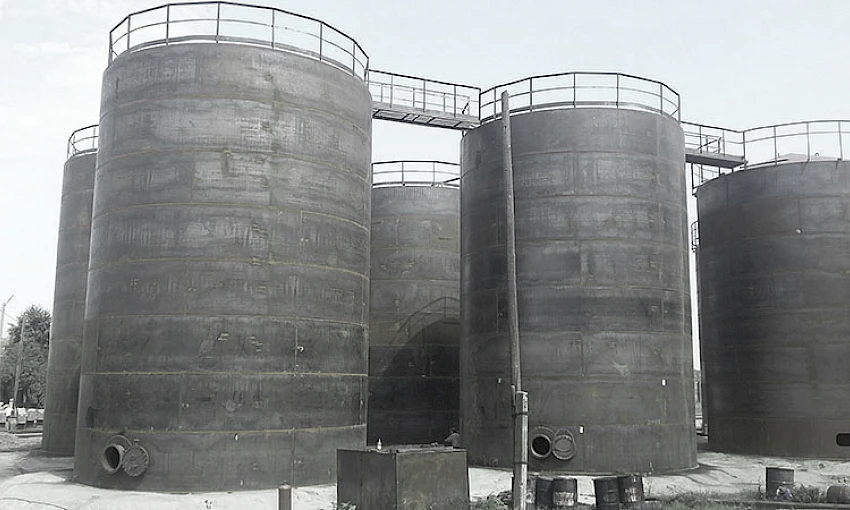How API 650 Welding Inspection Helps Avoid Defects and Ensures Durability
A Step-by-Step Consider the Installment Process of Welding Examination Techniques
Welding evaluation is a vital process that assures structural integrity and safety and security. The setup of inspection strategies includes several systematic actions, each indispensable to attaining trusted results. From planning and device option to carrying out non-destructive and visual tests, each phase needs careful focus. Understanding these treatments can significantly boost quality control in welding projects. What challenges emerge in implementing these strategies, and exactly how can they be efficiently addressed?
Comprehending the Relevance of Welding Evaluation
Welding evaluation is a crucial element of making sure architectural stability and safety in construction and production procedures. This practice involves assessing bonded joints for issues, ensuring that they satisfy certain criteria and laws. By systematically evaluating weld top quality, examiners can identify problems such as fractures, gaps, and incomplete blend, which can endanger the strength and toughness of frameworks.
The relevance of welding examination expands past prompt safety and security problems; it aids protect against pricey failings and prospective risks in the long term. Effective inspection techniques foster conformity with sector requirements, consequently improving the overall reliability of bonded parts. Furthermore, a robust inspection procedure adds to preserving the credibility of contractors and manufacturers, as it ensures clients of the quality of their tasks. Inevitably, comprehending the significance of welding evaluation is essential for promoting secure building and construction methods and guaranteeing the longevity of important infrastructure and items.
Choosing the Right Tools for Inspection
When choosing the appropriate devices for assessment, it is important to consider the particular needs of the welding process and the materials included. Various examination techniques, such as aesthetic, ultrasonic, and radiographic screening, require distinctive tools customized to their unique needs. For visual assessments, devices like magnifying calipers and glasses are essential for reviewing weld top quality. Ultrasonic testing requires customized devices capable of transferring and getting acoustic waves to discover internal imperfections. Radiographic testing, on the various other hand, makes use of X-ray or gamma-ray resources alongside delicate film or digital detectors to expose variances.
Furthermore, personal safety equipment (PPE) is vital to assure the safety of inspectors during evaluations. Choosing the right tools not only enhances the accuracy of assessments yet additionally contributes to the total stability and safety and security of the welding project. As a result, a detailed understanding of offered tools and their applications is necessary for efficient welding examination.
Getting ready for the Inspection Refine
Before starting the inspection procedure, it is important to establish a thorough plan that describes the extent and objectives of the examination. This plan ought to include specific requirements that define what comprises acceptable quality in the welding work being evaluated. Identifying the pertinent codes and requirements is important, as they will direct the evaluation requirements and techniques.
Additionally, personnel associated with the assessment should be adequately educated and accredited in welding inspection techniques to guarantee integrity and accuracy. A list can be useful in organizing the various facets of the assessment, varying from tools preparedness to environmental conditions that might affect the assessment.

Lastly, logistical considerations such as organizing, offered resources, and interaction between employee need to be attended to. By preparing systematically, examiners can enhance the performance of the evaluation and make certain that all important elements are properly considered before proceeding with the assessment itself.
Conducting Aesthetic Evaluations

Carrying out aesthetic assessments is an important step in the welding evaluation procedure, calling for careful preparation to guarantee effective examination. Examiners should recognize with essential flaw indications that can signal prospective concerns in weld quality. By concentrating on these aspects, one can enhance the total integrity of the assessment end results.
Planning For Visual Inspection
Visual examination serves as an important very first step in the welding evaluation procedure, ensuring that any prospective problems are determined early (API 650 Welding Inspection). Appropriate prep work is important for effective visual examination. Inspectors need to start by assessing pertinent paperwork, consisting of welding procedures and requirements, to understand the task needs. They should collect required devices, such as multiplying glasses, flashlights, and proper individual safety equipment (PPE) An extensive exam of the evaluation area is crucial; examiners should validate it is tidy and cost-free of obstructions. Furthermore, it is very important to develop perfect illumination conditions to boost visibility of welds. By taking these primary steps, examiners can develop a setting for recognizing discrepancies and ensuring the honesty of the bonded structures
Key Defect Indicators
A complete understanding of crucial defect indications is essential throughout visual examinations to assure the high quality and safety of bonded joints. Assessors should concentrate on details indications such as splits, porosity, damages, and incomplete blend. Cracks might look like sharp lines and can jeopardize architectural stability. Porosity shows up as small openings that can deteriorate weld strength. Undercuts, which are grooves along the weld side, can result in anxiety focus. Incomplete blend shows that the weld steel did not appropriately bond with the base product, resulting in a weak joint. By systematically recognizing these issues, inspectors can identify compliance with market standards and improve the total dependability of bonded structures, inevitably adding to more secure operational conditions.
Executing Non-Destructive Evaluating Techniques

Various non-destructive screening (NDT) techniques are indispensable to guaranteeing click for more the stability of welded structures without endangering their performance. These techniques enable examiners to examine weld top quality and discover problems without causing damages to the materials being checked. Common NDT strategies include ultrasonic testing, radiographic screening, magnetic fragment testing, and dye penetrant testing. Each approach serves a certain function, addressing various sorts of flaws such as fractures, porosity, or insufficient blend.
Carrying out NDT methods requires a methodical method, beginning with choosing the ideal method based on the materials and the nature of the weld. Educating personnel in these strategies is important for exact outcomes. In addition, establishing clear procedures and requirements assurances uniformity throughout the evaluation process. By integrating NDT into the welding assessment operations, companies can enhance the dependability of their products while decreasing prospective risks connected with structural failings. This positive technique ultimately contributes to visite site maintaining security and top quality requirements in welded building and constructions.
Documenting and Examining Inspection Outcomes
Efficient documentation and evaluation of evaluation results are necessary components of the welding assessment process. Accurate records of evaluation searchings for work as a recommendation for quality control and compliance with market requirements. API 650 Welding Inspection. Inspectors ought to use organized forms or electronic systems to log details such as the sort of weld, examination approaches used, and any kind of discrepancies recognized throughout the analysis
When information is gathered, thorough analysis is essential. This includes contrasting results versus developed criteria to recognize trends or persisting concerns. Analytical devices may be used to quantify problems and assess their impact on general weld high quality.
Effective interaction of searchings for to appropriate stakeholders is imperative. Reports and summaries need to be succinct and clear, highlighting essential insights and referrals for rehabilitative actions. By methodically assessing and recording examination results, companies can promote continuous renovation in welding practices and enhance item integrity.
Regularly Asked Questions
What Qualifications Are Required to End Up Being a Welding Assessor?
To end up being a welding assessor, one commonly requires pertinent accreditations such as AWS CWI, along with experience in welding techniques, understanding of welding codes, and proficiency in examination techniques to ensure quality and security requirements.
Exactly How Commonly Should Welding Inspections Be Conducted?
Welding assessments must be performed frequently, generally after each weld is completed, and occasionally throughout tasks. Aspects such as job complexity, market standards, and regulatory requirements can affect the regularity of these inspections.
What Is the Expense of Welding Inspection Solutions?
The price of welding examination solutions differs significantly based upon variables such as job intricacy, area, and size. Normally, prices vary from $100 to $150 per hour, with extra fees for specialized testing and certifications.
Exist Certifications for Welding Inspectors?
Yes, there are numerous accreditations for welding assessors, consisting of those used by the American Welding Society (AWS) and the International Institute of Welding (IIW) These accreditations assure examiners have the needed skills and understanding for effective evaluations.

Just how Do I Select an Evaluation Provider?
To select an inspection solution company, one ought to examine certifications, experience, industry track go to the website record, and consumer evaluations. In addition, contrasting service offerings and pricing can help ensure the selected service provider fulfills certain task requires effectively.
Furthermore, workers entailed in the assessment should be effectively educated and certified in welding evaluation strategies to guarantee dependability and precision. Performing visual examinations is a crucial action in the welding evaluation process, needing mindful prep work to ensure reliable evaluation. Visual inspection serves as a vital very first action in the welding assessment procedure, guaranteeing that any possible flaws are recognized early. Efficient documentation and evaluation of examination results are essential parts of the welding examination process. Welding inspections should be carried out regularly, generally after each weld is finished, and occasionally during projects.